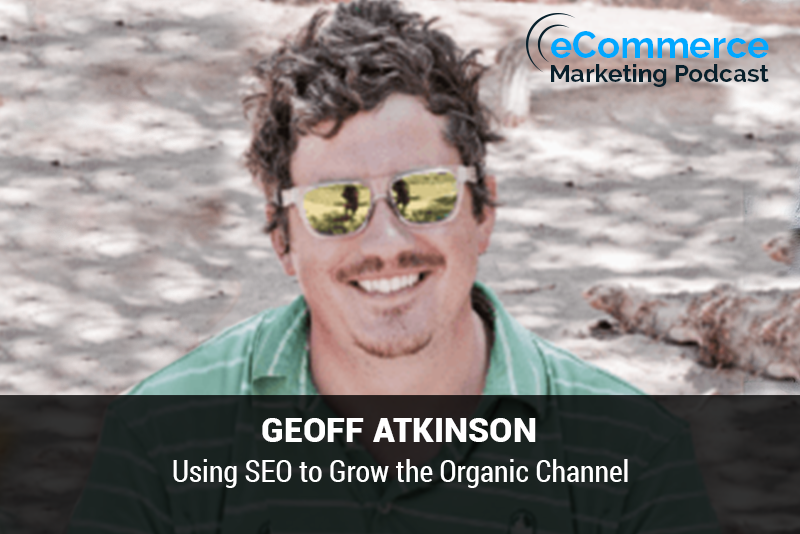
The eCommerce Marketing Podcast walks you through everything that goes into ecommerce marketing — from inbound marketing to paid advertising to conversions. Learn the strategies top marketing experts use to grow their businesses.
Marketing Strategies Revealed in this Episode:
- How to get started with SEO
- What is structured data and dynamic rendering
- In house SEO vs. Outsourcing
- Balancing organic SEO with Pay per click search advertising
- Advanced SEO tactics that you can learn from the top brands

Episode Title: Leveraging SEO Technology for eCommerce Success with Geoff Atkinson
Guest: Geoff Atkinson, Founder and CEO of Huckabuy
In this episode of the eCommerce Marketing Podcast, host Arlen Robinson interviews Geoff Atkinson, Founder and CEO of Huckabuy, an SEO software company. Geoff shares insights from his extensive experience in SEO, including his time as Senior VP of Marketing for Overstock.com, where he helped increase growth by $300 million. The discussion covers essential SEO strategies for eCommerce businesses, the importance of structured data, dynamic rendering, and advanced SEO tactics.
Key Takeaways:
- Introduction to Geoff Atkinson and Huckabuy (00:01:00):
- Background in SEO and marketing at Overstock.com.
- Founding and growth of Huckabuy, focusing on automated structured data and SEO cloud services.
- Starting with SEO for eCommerce Businesses (00:05:00):
- Importance of keyword research to understand customer search behavior.
- Structuring website navigation to align with popular search terms.
- Enhancing site architecture for better search engine understanding.
- Structured Data and Its Benefits (00:10:00):
- Explanation of structured data and its role in improving search engine understanding.
- Use of structured data to enhance search results, such as displaying reviews and product information.
- Dynamic Rendering Explained (00:18:00):
- Concept of dynamic rendering and its significance in SEO.
- Creating simplified, SEO-friendly versions of websites for better crawlability by search engines.
- When to Outsource SEO vs. Keeping It In-House (00:25:00):
- Importance of handling SEO in-house for better understanding and control.
- Outsourcing the technical aspects of SEO, such as structured data and dynamic rendering.
- Advanced SEO Tactics for eCommerce (00:30:00):
- Expanding internationally to less competitive markets.
- Utilizing advanced keyword research to create optimized subcategories and attribute-based pages.
- Example of creating new product categories based on keyword research.
- Fun Fact About Geoff Atkinson (00:38:00):
- Geoff was a cross-country ski racer and spent time on the U.S. ski team.
Guest Information:
- Name: Geoff Atkinson
- Position: Founder and CEO of Huckabuy
- Website: Huckabuy











